Human-wildlife conflict and coexistence is a shockingly common problem, often with enormous consequences for both individual animals and entire populations.
When human-wildlife conflict comes to mind, you may immediately think of wildlife crime instead - which isn't wrong, since many regions with wildlife crime problems like poaching are also areas where people may frequently deal with human-wildlife conflict, causing the two issues to go hand-in-hand. But human-wildlife conflict is a much broader issue encompassing many ways that human presence and interference can cause problems for us and animals alike. Human-wildlife conflict includes:
- Elephants trampling a farmer's crops, resulting in retaliation
- New real estate developments infringing on ecosystems where predator species live, leading to predators having less territory and less food, which in turn leads to predators attacking domestic animals and livestock
- Freeways dividing the territory of animals like mountain lions, leading to wildlife venturing into neighborhoods or being killed by cars
- Lead bullets used in hunting causing scavengers like condors to die of lead poisoning
These are just a few examples of how humans can negatively impact wildlife, and it's clear to see how many of these scenarios could escalate. Human-wildlife conflict solutions don't just include ways in which we can prevent these issues (for example, through tracking predators, monitoring populations' territories, or building barriers and wildlife crossings monitored by sensors), but also the ways in which we can help people connect with wildlife and care about learning to live alongside them.
If you're interested in solutions that can prevent human-wildlife conflict, join this group and get to know the people who are working to protect and save species around the world!
Header image: Casey Allen on Unsplash
No showcases have been added to this group yet.
- @Arjun_Viswa
- | S
- 0 Resources
- 0 Discussions
- 26 Groups
3point.xyz
Over 35 years of experience in biodiversity conservation worldwide, largely focused on forests, rewilding and conservation technology. I run my own business assisting nonprofits and agencies in the conservation community



- 6 Resources
- 69 Discussions
- 12 Groups
- 0 Resources
- 0 Discussions
- 12 Groups
- 0 Resources
- 0 Discussions
- 18 Groups
Movement ecologist using conservation technology to study the behaviors of animals in the wild to understand how they cope with change and most effectively address conservation- and conflict-related issues.


- 0 Resources
- 10 Discussions
- 11 Groups
- @tobiaspetri
- | he/him
Schäuffelhut Berger GmbH
data science & algorithmic development for movement ecology



- 11 Resources
- 33 Discussions
- 10 Groups
I'm a PhD student at UW working with the Smithsonian and Center for One Health Research. I develop models to predict and explain zoonotic disease patterns, with a strong emphasis on how these diseases impact wildlife populations and communities sharing the same landscape.



- 0 Resources
- 13 Discussions
- 12 Groups
Forester/ Ecologist with a Master’s Degree in the department of Range science - Wildlife and Fresh water fisheries.
- 0 Resources
- 0 Discussions
- 11 Groups
- @Pooja_Lama
- | She/Her
I am an early career researcher who is interested in contributing to wildlife conservation.
- 0 Resources
- 0 Discussions
- 9 Groups
- @MandyEyrich
- | She/Her
University of Florida (UF)
Bridging industries with 15+ years of cross-sector expertise specializing in user-centric technology and product strategy, UX research, UX/UI design, process optimization, and end-to-end agile product development moving from ideation to iteration.
- 0 Resources
- 0 Discussions
- 26 Groups
- @santhosh
- | he/him/his
Leads Technology for Conservation programme at The Habitats Trust
- 0 Resources
- 3 Discussions
- 10 Groups
Sustainability Manager for CERES Tag LTD. An animal health company; animal monitoring, conservation, & anti-poaching/ rural crime. Wildlife, livestock, equine & companion. #CeresTrace #CeresWild #CeresRanch





- 2 Resources
- 20 Discussions
- 23 Groups
Making waves in wetland conservation: Explore the outcomes and insights from Ramsar COP15, a premier global event on wetland protection and sustainability
10 August 2025
Calling conservation organizations working to protect the Asian elephant, apply now for a chance to receive a grant of up to $ 5,000. Proposals are accepted year-round.Photo by Hu Chen on Unsplash.
4 July 2025
This is a chance to participate in a short survey about the preferences that conservation practitioners have for evidence. There's a chance to win one of three £20 Mastercard gift cards.
24 June 2025
A Post-Doc position is available to join the team coordinating the Urban Exploration Project – a collaborative initiative in partnership between the University of St. Andrews and the National Geographic Society.
2 May 2025
This project aimed to reduce human-carnivore conflict by building a resilient boma for a vulnerable family in Hunyari village. It served as a model for other families, promoting stronger livestock protection. The...
17 April 2025
WWF's Arctic Community Wildlife Grants program supports conservation, stewardship, and research initiatives that focus on coastal Arctic ecology, community sustainability, and priority Arctic wildlife, including polar...
7 March 2025
The worst thing a new conservation technology can do is become another maintenance burden on already stretched field teams. This meant Instant Detect 2.0 had to work perfectly from day 1. In this update, Sam Seccombe...
28 January 2025
The Zoological Society of London's Instant Detect 2.0 is the world's first affordable satellite connected camera trap system designed by conservationists, for conservationists. In this update, Sam Seccombe describes the...
21 January 2025
Wildlife on roads creates a significant hazard in rural areas, to humans and animals alike. Low-tech prevention methods such as overpasses give great results, but they are expensive and can’t cover every scenario. Now...
12 November 2024
Very nice video!
7 October 2024
The Connected Conservation is thrilled to announce our award's third round in collaboration with the Airbus Foundation. This award champions the use of cutting-edge satellite imagery to tackle biodiversity loss and...
30 September 2024
The Human-Wildlife Initiative operates in three areas, viz. France's Provence-Alpes-Côte d’Azur ( PACA ) region, French-speaking Switzerland and Spain. Each has it's own call with it's own specifics.
11 September 2024
October 2025
event
February 2025
event
January 2025
event
32 Products
3 R&D Projects
42 Organisations
Recently updated products
Recently updated R&D Projects
Recently updated organisations
| Description | Activity | Replies | Groups | Updated |
|---|---|---|---|---|
| Hi all, Just saw this on the BBC website: http://www.bbc.co.uk/news/blogs-news-from-elsewhere-38288999 Dogs in one town... |
|
Human-Wildlife Coexistence | 8 years 8 months ago | |
| @Suzanne.Stone have you had any success with your trials in Idaho? |
|
Human-Wildlife Coexistence | 8 years 9 months ago | |
| Hi everyone! I have just posted about my machine-vision based elephant-detection system which I am currently attempting to develop! https://www.wildlabs.net/... |
|
Human-Wildlife Coexistence | 8 years 9 months ago | |
| Hi all, I thought I'd alert you to this recent journal article, which looked at all published research on predator... |
|
Human-Wildlife Coexistence | 8 years 11 months ago | |
| Hi John, I have two good friends in Kenya who have some answers. I'll ask them to come here and tell you more... Marie |
|
Human-Wildlife Coexistence | 8 years 11 months ago | |
| http://gizmodo.com/drawing-eyes-on-cow-butts-may-ward-off-hungry-lions-1783744270 Drawing Eyes on Cow Butts May Ward Off Hungry... |
|
Human-Wildlife Coexistence | 9 years ago | |
| Hello all, Another thought I had regarding human-wildlife conflict. Since wildlife migrations occur around similar times, every year,... |
|
Human-Wildlife Coexistence | 9 years 3 months ago | |
| Ho John, That's a great idea and thanks for sharing, but as you said, limitations on battery and speaker capacity abound. Might anyone else have any thoughts on how we... |
|
Human-Wildlife Coexistence | 9 years 3 months ago |
Lion Deterrence
29 February 2024 9:59pm
8 March 2024 2:52pm
Hi @rokshanabushra
So are you looking to replicate something like this?
https://predatorguard.com/products/predator-deterrent-light
This is, in principle at least, fairly simple, as it's really just some red LEDs and a small solar-battery power system. You could buy one of the commercial options and do a teardown (or I can do it if you like, as I'd be interested to find out exactly what they are doing).
In lieu of that, I suspect a light-dependent resistor is probably used to control the lights coming on at night (i.e. something along these lines: https://www.instructables.com/How-to-Make-LDR-Darkness-Sensor-Circuit-Simple-DIY/).
If you employ some sort of 'blink' or flashing protocol (you could use a 555 timer to keep the costs down), you could save quite a bit of power (compared to running the lights constantly). For example, something along these lines: https://www.instructables.com/Adjustable-SingleDual-LED-Flasher-Using-555-Timer-/ You could also add a PIR motion sensor so it only comes on when nearby motion is detected, but of course the costs of building goes up.
There are also a few off-the-shelf flasher designs that might be cheap enough already to consider (e.g. https://www.ledsales.com.au/index.php?main_page=product_info&cPath=142_143&products_id=2820). This seems like a reasonably good option for low power, although I have no idea how well it actually works...You can also buy LEDs that flash by themselves (e.g. https://www.ledsales.com.au/index.php?main_page=product_info&cPath=148_152_159&products_id=2951).
If you think sounds might also help (e.g. human noises etc.), check out the Boombox from Freaklabs: https://freaklabs.org/technology/boombox/ and it should be possible to add 'eyes' in the form of reflectors, or, some kind of LEDs that activate at the same time as the sound. You could contact Akiba or Jacinta about it as I am sure they'd help if they can: https://freaklabs.org/about/#:~:text=providers%20including%20ARGOS.-,the%20team,-Chris%20%E2%80%98Akiba%E2%80%99%20Wang
Anyway, happy to help if I can and all the best for the project.
Cheers,
Rob
8 March 2024 4:11pm
Hi Rokshana,
Maybe you can try this product from India called ANIDERS -
I think this product would help you a lot. This is their website -
ANIDERS - Animal Intrusion Detection and Repellent System | Kyari for Wildlife
Searching for an animal repellent solution? We at Kyari have come up with a mechanised scarecrow that can prevent crop raiding and increase crop yield. It is effective on Elephants, Wild Boar, Blue Bull (Nilgai) and Deer.
Tools for automating image augmentation
26 January 2024 2:33pm
16 February 2024 7:42am
Hi @arky !
Thanks for your reply.
I am running into pytorch/torchvision incompatibility issues when trying to run your script.
Which versions are you using?
Best regards,
Lars
18 February 2024 11:05am
@Lars_Holst_Hansen Here is the information you requested. Also run Yolov8 in multiple remote environments without any issues. Perhaps you'll need to use a virtual environment (venv et al) or conda to remedy incompatibility issues.
$ yolo checks
Ultralytics YOLOv8.1.4 🚀 Python-3.10.12 torch-1.13.1+cu117 CUDA:0 (Quadro T2000, 3904MiB)
Setup complete ✅ (16 CPUs, 62.5 GB RAM, 465.0/467.9 GB disk)
OS Linux-6.5.0-17-generic-x86_64-with-glibc2.35
Environment Linux
Python 3.10.12
Install pip
RAM 62.54 GB
CPU Intel Core(TM) i7-10875H 2.30GHz
CUDA 11.7
matplotlib ✅ 3.5.1>=3.3.0
numpy ✅ 1.26.3>=1.22.2
opencv-python ✅ 4.7.0.72>=4.6.0
pillow ✅ 10.2.0>=7.1.2
pyyaml ✅ 6.0.1>=5.3.1
requests ✅ 2.31.0>=2.23.0
scipy ✅ 1.11.4>=1.4.1
torch ✅ 1.13.1>=1.8.0
torchvision ✅ 0.14.1>=0.9.0
tqdm ✅ 4.66.1>=4.64.0
psutil ✅ 5.9.8
py-cpuinfo ✅ 9.0.0
thop ✅ 0.1.1-2209072238>=0.1.1
pandas ✅ 1.5.3>=1.1.4
seaborn ✅ 0.12.2>=0.11.0
18 February 2024 11:18am
Perfect thanks! I am still a novice using Python but my wife can help me!
Post-doc possition - Field spanning movement ecology, ecology of fear, bio-logging science, behavioral ecology, and ecological statistics
10 February 2024 7:20am
Southern African Wildlife Management Association Conference 2024
6 February 2024 12:20pm
Passionate engineer offering funding and tech solutions pro-bono.
23 January 2024 12:06pm
26 January 2024 3:18pm
Hi Krasi! Greetings from Brazil!
That's a cool journey you've started! Congratulations. And I felt like theSearchLife resonates with the work I'm involved round here. In a nutshell, I live at the heart of the largest remaining of Atlantic forest in the planet - one of the most biodiverse biomes that exist. The subregion where I live is named after and bathed by the "Rio Sagrado" (Sacred River), a magnificent water body with a very rich cultural significance to the region (it has served as a safe zone for fleeing slaves). Well, the river and the entire bioregion is currently under the threat of a truly devastating railroad project which, to say the least is planned to cut through over 100 water springs!
In face of that the local community (myself included) has been mobilizing to raise awareness of the issue and hopefully stop this madness (fueled by strong international forces). One of the ways we've been fighting this is through the seeking of the recognition of the sacred river as an entity of legal rights, who can manifest itself in court, against such threats. And to illustrate what this would look like, I've been developing this AI (LLM) powered avatar for the river, which could maybe serve as its human-relatable voice. An existing prototype of such avatar is available here. It has been fine-tuned with over 20 scientific papers on the Sacred River watershed.
And right now myself and other are mobilizing to manifest the conditions/resources to develop a next version of the avatar, which would include remote sensing capacities so the avatar is directly connected to the river and can possibly write full scientific reports on its physical properties (i.e. water quality) and the surrounding biodiversity. In fact, myself and 3 other members of the WildLabs community have just applied to the WildLabs Grant program in order to accomplish that. Hopefully the results are positive.
Finally, it's worth mentioning that our mobilization around providing an expression medium for the river has been multimodal, including the creation of a shortfilm based on theatrical mobilizations we did during a fest dedicated to the river and its surrounding more-than-human communities. You can check that out here:
Let's chat if any of that catches your interest!
Cheers!
2 February 2024 1:22pm
Hi Danilo. you seem very passionate about this initiative which is a good start.
It is an interesting coincidence that I am starting another project for the coral reefs in the Philipines which also requires water analytics so I can probably work on both projects at the same time.
Let's that have a call and discuss, will send you a pm with my contact details
There is a tech glitch and I don't get email notifications from here.
Landscape of technology solution for African lion conservation
15 January 2024 11:03am
29 January 2024 10:25am
Hi Simon,
Thanks for your reply. I would be interested in having a chat with you and hear more about the work you are doing! Lets connect and we can try to schedule a call in the coming days.
Thank you,
Best,
Jacobo
29 January 2024 11:03am
Hi Maureen,
Thank you very much for your insights. I would definitely like to connect with you and discuss this further! I will reach out to you so we can potentially schedule a quick call and chat about this further.
Thank you,
Best regards,
30 January 2024 10:47am
Hi Jacobo,
We have launched a new tracking/logging/finding technology which you may find of interest https://www.tagranger.com/
Based on LoRaWAN (but with yor own handheld gateway) you can communicate with your Tags in real time. As well as requesting current GPS locations from long distances away you can also use the integrated ranging tools which give you distance to your Tag in metres when you get closer.
Key features:
LoRaWAN (tested up to 21km line of sight) No infrastructure required, but you can also add it to your own LoRaWAN network.
UWB ranging gives distance (in metres) to the Tag up to 150m away
Hybrid Ranging combines the equivalent of a VHF pinger from a few km away (line of sight) with the UWB ranging when you get closer
Log Download remotely using UWB radio
Ultra light 39g Tag
Power Efficiency Defined by your configuration profie, 2 days to 4 years!
Let me know if you would like any further help with this.
Craig
How are Outdoor Fire Detection Systems Adapted for Small Forest Areas, Considering the Predominance of Indoor Fire Detectors?
8 January 2024 4:27pm
22 January 2024 6:35pm
Fire detection is a sort of broad idea. Usually people detect the products of fire, and most often this is smoke.
Many home fire detectors in the US use a radioactive source and measure the absorption of the radiation by the air. More smoke means more absorption.
For outdoor fire detection, PM2.5 can be a very good smoke proxy, and outdoor PM2.5 sensing is pretty accessible.
This one is very popular in my area.
Classic - Air Quality Monitor | AQI PM2.5 Indoor/Outdoor Sensor – PurpleAir
The PurpleAir Classic air quality monitor is the original and popular PurpleAir sensor. It measures real-time PM2.5 concentrations for residential, commercial, or industrial use and can be installed indoors or outdoors. Built-in WiFi enables the air quality measurement device to transmit data to the real-time PurpleAir AQI Map, which is stored and made available to any smart device. The PA-II is available in two editions. The SD edition includes an onboard SD logger to record and store data without a WiFi connection. Please note: This sensor does not come with a power adaptor. Find a suitable OUTDOOR-rated adaptor here or use your own USB power source (any 5V, 1.2 to 2.4 amp adaptor will work).
Cold-Weather Soundscapes
HWC Tech Challenge update 2020
Presentation opportunity: Text analysis for conservation (NACCB 2024)
8 January 2024 4:05pm
Apply to Beta test Instant Detect 2.0
11 May 2023 10:55am
21 December 2023 3:48am
Will you accept personal/hobbyist focused on conservation on their small plots of land (10-100 acres)?
I would, and know others, who would happily pay more than the official conservationists rate for the service, which could help to further subsidize the project. (Referring to your statement here: https://wildlabs.net/discussion/instant-detect-20-and-related-cost)
Seeking Host Organisations for Travel Scholarship Application
19 December 2023 12:54am
20 December 2023 3:07am
Hi Eva,
Me and my colleagues run a small NGO based on Yogyakarta in Indonesia, although our projects are spread around the country. One of our active project is working with the movement ecology of Sunda gharials in Berbak-Sembilang National Park. One of the other is for Malayan Giant Turtle conservation using one-plan approach, which we are planning to start in situ phase. We can't give you promise about anything, but are able to be the host organization and would love to talk the opportunity!
Cheers,
Dhanu
Thermal cameras for monitoring visitors in highly vulnerable conservation areas
21 June 2022 3:44pm
22 September 2023 12:00pm
I would be interested how you setted up this system. Which model do yu use and how are they connected?
6 October 2023 12:27pm
We have the the FLIR FC series (FC 618) thermal cameras setup. with regards to the connection between the cameras and monitoring station, this through fiber cable and microwave radio links.
15 December 2023 8:09pm
Hi,
This is a really late answer but I was new to wildlabs then. I have a security appliance that uses state of the AI models and user defined polygon areas of interest that generates video alerts of intrusions in typically under a second.
Although its setup to install automatically on an NVidia AI on the edge boxes of your intentions were to monitor a great deal of cameras you could also install it on a desktop with a high end GPU for very high performance. At home I use a desktop with an rtx 2080ti and monitor around 15 cameras and a thermal imaging camera (old one).
I have also tested a high end model (yolov7) on a high end thermal imaging camera image and it works fine as well.
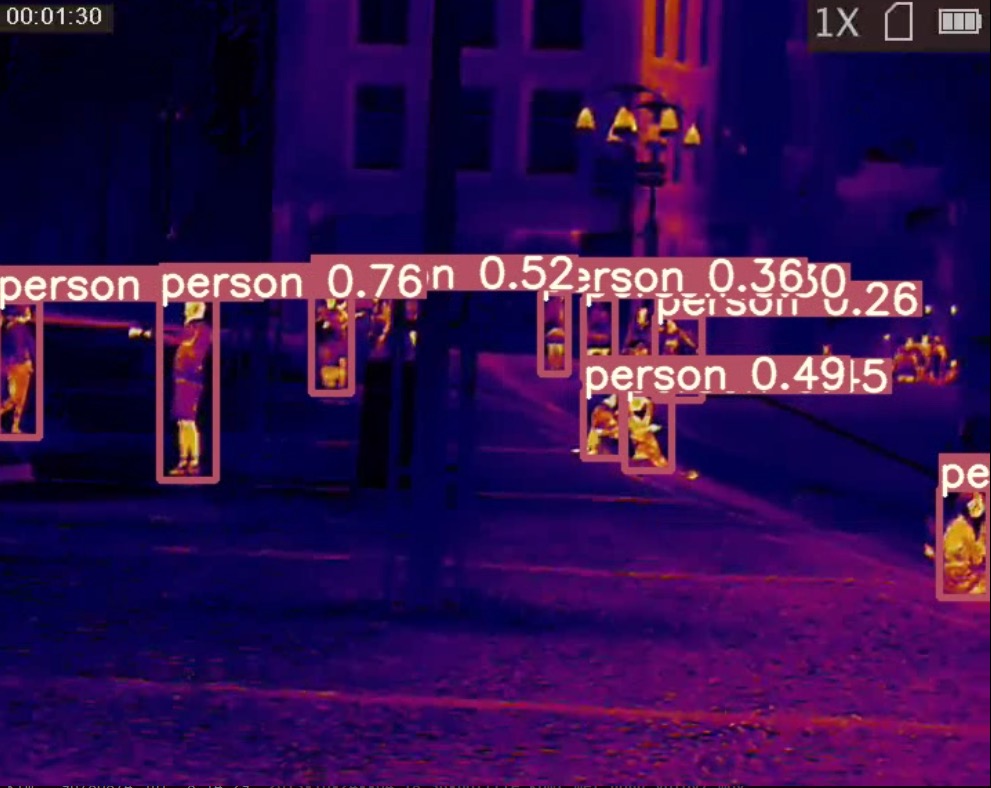
Thermal imaging cameras are hellishly expensive though and I’ve found that new extremely light sensitive cameras like the HIKvision colorvu series almost obsoletes them in terms of people detection at night at a fraction of the cost.
If you are interested I’d be happy to show you a demo in a video meeting sometime if you like. I’m pretty sure it would meeting all your intrusion detection and alerting needs.
My project page is
How polar bears and people are kept safe thanks to integrated video and radar system
15 December 2023 12:22pm
Bear-dar: Updates from the Field
15 December 2023 11:58am
New Toolkit to Help Communities in Africa to Live Safely with Elephants
13 December 2023 5:44pm
Holistic, Ethical & Community-led Human-Wildlife Conflict Solutions with Gabriela Fleury
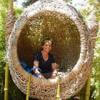 Gabriela Fleury
and 1 more
Gabriela Fleury
and 1 more
8 December 2023 1:38pm
ICOTEQ launch TAGRANGER® system of products
23 November 2023 1:25pm
AWMS Conference 2023
Insight; a secure online platform designed for sharing experiences of conservation tool use.
7 November 2023 1:01pm
How 400km solar-powered fence reduces human-wildlife conflict - The Standard
31 October 2023 7:35am
A Market Reduction Approach to Illegal Ivory Markets in Tanzania
30 October 2023 7:41am
Seismic detectors
20 December 2015 1:10pm
31 August 2018 2:51pm
Hi Nilaksha,
Congratulations! That is great news! Please do keep us posted on how it goes and do let us know if you need varied field sites in which to test the tools. @Teun , how's your prototype coming along?
Best,
Nilanga
30 March 2021 6:01pm
Dear all, any update on this subject?
All the best.
29 October 2023 6:39pm
Hi Antoine,
Sorry about the late reply. The field trials were abandoned mainly due to the COVID-19 pandemic. We're planning to improve our prototype and conduct field trials in this December. I'll post an update here.
regards
Horizon call for EU Human-Wildlife conflict experts
23 October 2023 10:34am
ZSL Research Fellow (x3 roles)
20 October 2023 3:34pm
Restoring the Mara Elephant Population Using Coexistence Tech Solutions with Mara Elephant Project's Wilson Sairowua
20 October 2023 1:31pm
27 May 2024 3:54pm
28 May 2024 8:12am
What Biologgers are you using?
30 August 2023 10:44am
7 September 2023 10:57am
Interesting. interesting. I'm probably jumping the gun here but I'm curious - are you getting any trends on types of biologgers or specific manufacturers people are talking about? Or is everyone using different tags/manufacturers?
7 September 2023 11:00am
Ah! It's great to find out about your tags - great video, thanks for sharing. We'd love to hear from some of your users about their experiences with your tags! Would you be able to share the poll with your user community?
12 October 2023 12:24pm
Hey Stephanie,
Thanks a lot! Sorry I missed your message but of course I can ask our users about their experience with sensors!
🚀 New Grant: 'Satellites for Biodiversity Award' Round 2
2 October 2023 1:50pm
Human - Non-human Primate Conflict Mitigation Approaches: Lessons from Olive Baboons - YouTube
26 September 2023 12:11pm








































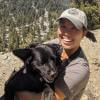

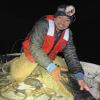

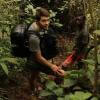











4 March 2024 5:34am
I remember the study in EA when they painted cows with zebra strips to stop the Tsetse fly bites. Sometimes it is the simplest things that work
Cows painted with zebra-like striping can avoid biting fly attack | PLOS One
Experimental and comparative studies suggest that the striped coats of zebras can prevent biting fly attacks. Biting flies are serious pests of livestock that cause economic losses in animal production. We hypothesized that cows painted with black and white stripes on their body could avoid biting fly attacks and show fewer fly-repelling behaviors. Six Japanese Black cows were assigned to treatments using a 3 × 3 Latin-square design. The treatments were black-and-white painted stripes, black painted stripes, and no stripes (all-black body surface). Recorded fly-repelling behaviors were head throw, ear beat, leg stamp, skin twitch, and tail flick. Photo images of the right side of each cow were taken using a commercial digital camera after every observation and biting flies on the body and each leg were counted from the photo images. Here we show that the numbers of biting flies on Japanese Black cows painted with black-and-white stripes were significantly lower than those on non-painted cows and cows painted only with black stripes. The frequencies of fly-repelling behaviors in cows painted with black-and-white stripes were also lower than those in the non-painted and black-striped cows. These results thus suggest that painting black-and-white stripes on livestock such as cattle can prevent biting fly attacks and provide an alternative method of defending livestock against biting flies without using pesticides in animal production, thereby proposing a solution for the problem of pesticide resistance in the environment.